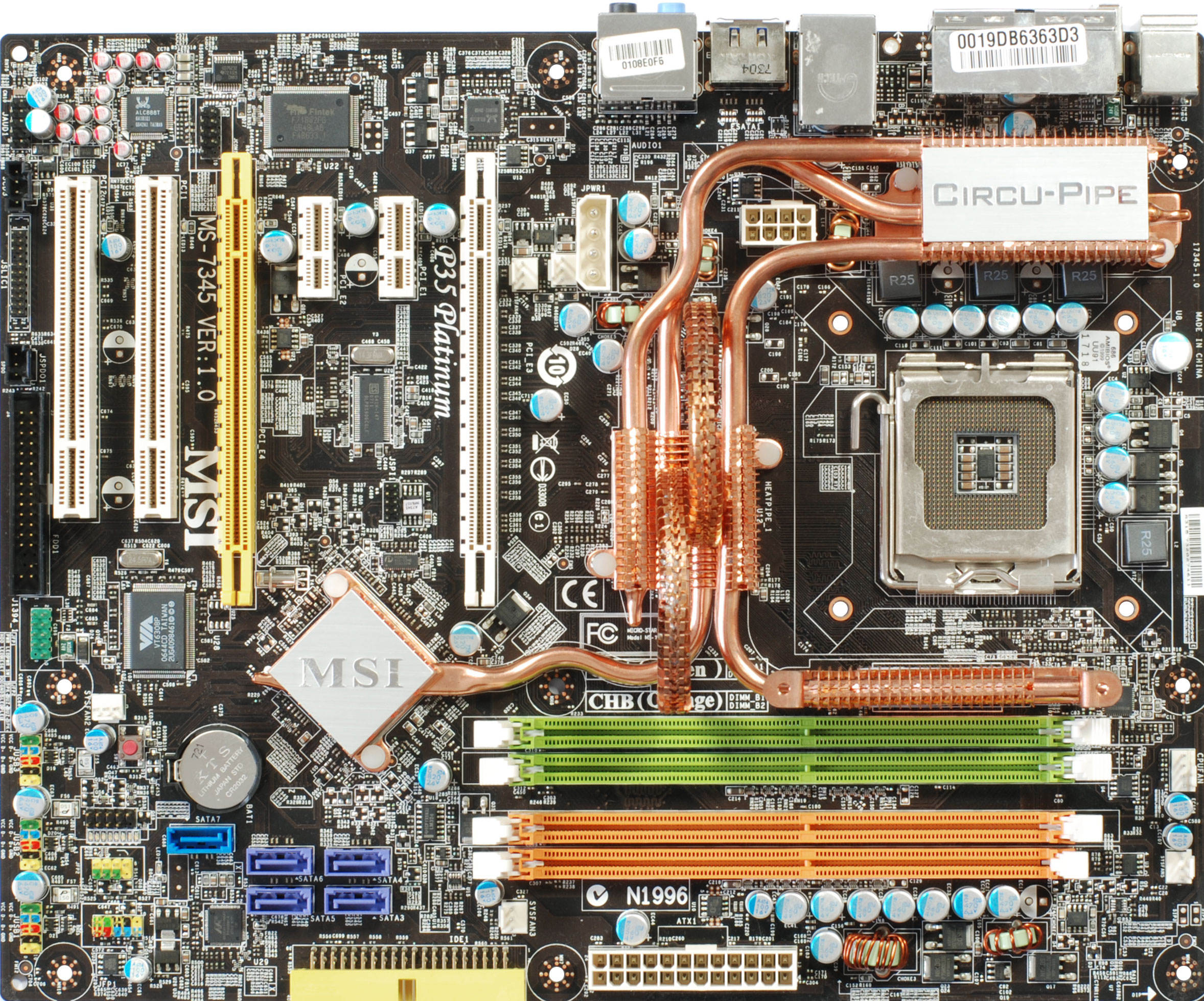Time To Upgrade: Should You Dump Your 2007 PC?
Intel agressively promotes its Core i3/i5/i7 series, but we wonder: Does it make sense to replace a three-year old high-end PC? In the end, quad-core processors were already pretty powerful in 2007. We created a brand new system and a 2007 PC to compare.
The 2007 System: Intel P35 Express
Our 2007 motherboard is an MSI P35 Platinum 1.0, one of the few motherboards from this time still available in our labs. A later 1.1 revision proved significantly better on overclocking, as it can go way beyond a 460 MHz FSB base clock on the LGA 775 platform. Perhaps this is why the P35 Platinum is still available.
This board utilizes Intel's P35 Express chipset, which is capable of running either DDR2 or DDR3 memory. On this board, MSI opted for DDR2, being the more common and more affordable technology in 2007. We deployed four Corsair 1 GB DDR2-800 DIMMs to match the 4 GB total memory on our 2010 system. Intel introduced its ICH9 southbridge with the P35 chipset. The main difference compared to the ICH8 was having twelve instead of ten USB 2.0 ports and a gigabit Ethernet MAC, making all six x1 PCI Express lanes available for expansion slots. Luckily, the MSI P35 Platinum uses the ICH9R variant, which supports AHCI mode for Serial ATA and RAID 5.
Additionally, MSI enabled port multiplication on the P35 Platinum, allowing for eSATA connections. You'll also find a FireWire 1394a (400 Mb/s) controller, optical audio output, and a three-phase switching voltage regulator with solid capacitors. This clearly can’t compete with today’s multi-phase implementations.
What Does the 2007 Motherboard Lack?
There are only few items that we would miss on this board:
- USB 3.0: The new high-speed external interface wasn’t available in 2007. You’d have to install an add-on card with two USB 3.0 ports. However, even today, only a few platforms come with onboard USB 3.0 controllers.
- PCI Express 2.0 wasn’t available in 2007, either, so you’d probably receive slightly reduced performance from a pair of modern, high-end graphics cards. Please have a look at the article PCI Express and SLI Scaling: How Many Lanes Do You Need? for more information on PCI Express connectivity for graphics. Upgrading to a PCIe 2.0 platform for the sake of graphics seems to only makes sense for people without budget restraints.
- SATA 6Gb/s: The new storage interface effectively doubles bandwidth, but so far there has only been one flash SSD product capable of taking advantage of the additional overhead. This will change over the next several months, but right now there's no urgent need to adopt a new platform just for SATA 6Gb/s.
- Power Saving Features: Modern boards come with dynamic voltage regulators that scale phases up and down depending on the load. This allows today’s platforms to be lower on idle power.
What Are the Benefits of the 2007 Motherboard?
There are a few positives to keep in mind when comparing the P35 Platinum (or equivalent products) to a 2010 motherboard:
Get Tom's Hardware's best news and in-depth reviews, straight to your inbox.
- UltraATA controllers: The Serial ATA is standard these days, but some users still have parallel ATA drives in service, and the PATA interface is no longer available on most new motherboards.
- PCI slots: These are slowly going away, as well.
Current page: The 2007 System: Intel P35 Express
Prev Page Old Vs. New: Powerful Systems From 2007 And 2010 Compared Next Page 2007 Components: Core 2 QX6700, GeForce 8800GTS, WD Raptor
